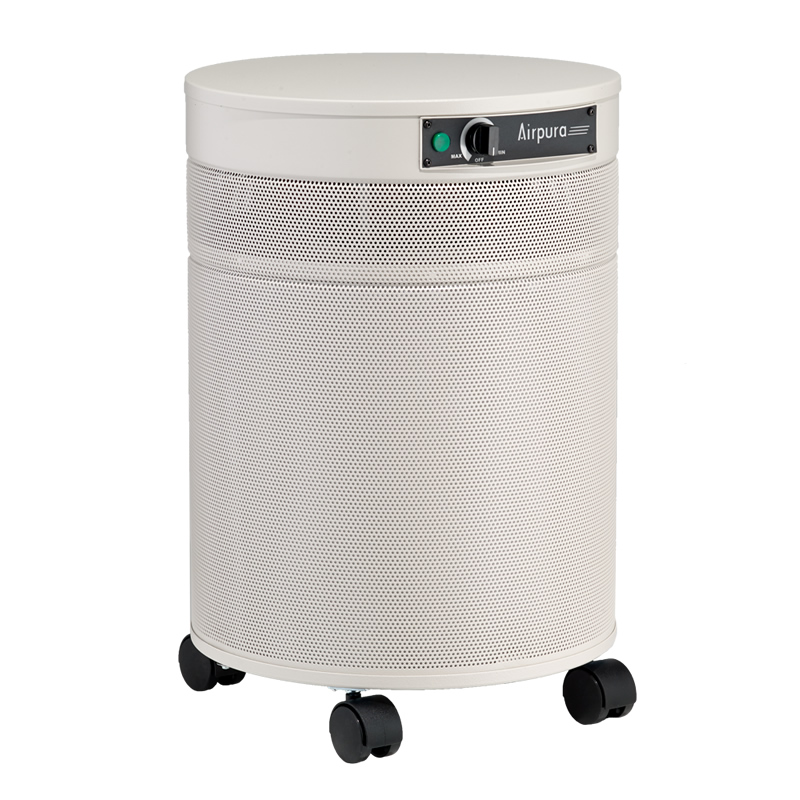- What's New?
- Why a Home Gym?
- Functional Trainers
- Longevity Training
- Fat Loss Workouts
- The Best Workout For Men
- Fat Loss For Women
- Healthy Eating
- How To Improve Your Microbiome
- Biosuperfood
- Iridesca
- Superfood
- Shilajit
- Micellar Curcumin
- Rez-V
- Beta Glucan
- P-Well
- Copper GHK
- Fibrenza
- LipiCept
- Flameout
- Igniter
- Indigo-3G
- Omega-Man
- Feral Tissue Protocol
- Pancremet
- How To Avoid Microplastics
- AirDoctor 3500
- ENVION Therapure
- Airpura R600
Do Air Purifiers Really Work?
Air purifiers are beneficial because they improve indoor air quality by filtering out harmful particles, reducing allergy symptoms, and even improving sleep quality. They
are particularly helpful for individuals with allergies, asthma, or
respiratory conditions, as they can help remove allergens and pollutants
that trigger these issues. So do air purifiers really work?
The primary benefits include:
- Improved Respiratory Health: Air purifiers can help alleviate symptoms of allergies and asthma by reducing the presence of airborne allergens like pollen, dust, and pet dander.
- Reduced Allergies: By filtering out allergens, air purifiers can help reduce sneezing, itching, and other allergy symptoms.
- Improved Sleep: Cleaner air can lead to better sleep, especially for those with allergies or respiratory issues.
- Enhanced Air Quality: Air purifiers can help remove dust, smoke, odors, bacteria, and even larger particles like pet hair.
- Protection from Germs: Some air purifiers are designed to filter out bacteria and viruses, potentially reducing the risk of infection.
- Neutralization of Odors: Air purifiers can help eliminate unpleasant odors from cooking, garbage, or pets.
- Reduced Stress: Air pollution, both indoors and outdoors, can contribute to stress. Air purifiers can help create a cleaner and more comfortable environment, potentially reducing stress levels.
- Protection from Harmful Chemicals: Air purifiers can help neutralize harmful chemicals that may be present in indoor air.
- Mold Prevention: Certain air purifiers can help filter out mold spores, reducing the risk of mold growth in the home.
Do Air Purifiers Really Work?
I Use 4 Of Them & I Can Tell You
That They Absolutely Do!
I've got an AirDoctor 3500 that covers the living room, dining room and kitchen. For the bedroom
I've got an AirDoctor 2000. I also have two ENVION Therapure TPP630's, one for my home office and one for my wife's home office. Here are my reasons for why I use each air purifier:
The AirDoctor 3500 is a professional-grade HEPA air purifier. It filters out toxins and airborne pollutants including dust mites, allergens, pollen, mold spores, pet dander, smoke, bacteria, and viruses. It has been tested to capture and remove airborne particles as small as 0.003 microns in size (100 times smaller than the HEPA standard). It covers larger areas, so I use it for the main part of the house. You can read my review of the AirDoctor 3500 HERE.
For the bedroom I've got the smaller AirDoctor 2000. Same features as the AirDoctor 3500, but in a more compact design, making it ideal for small to medium rooms. One feature that is notably different form the AirDoctor air purifiers vs. the Therapure air purifiers, is that the AirDoctor blows the cleaned air UP, from the top of the unit. Obviously nice when you don't want air being blown at you.
The Envion Therapure TPP630 Tower Air Purifier is another smaller unit, but it blows the cleaned air forward. I use these in our home offices because in the spring and summer they double as fans, blowing cooler air at us.
It has a HEPA filter, a built in UV-C Light that destroys
germs and viruses
on contact, and a
Photocataylst filter that reduces VOCs (Volatile Organic Compounds)
found in paint and carpet fumes.
You can read my review of the
Therapure TPP630
HERE.
While I am THRILLED with the performance of my air purifiers, there are
more advanced ones out there. The most impressive one that I've
experienced is the Airpura R600 at my Chiropractor's office. This sucker
offers 360° air distribution that purifies up to 2000 sq. ft! It has the highest grade of HEPA filter available & an 18-lb carbon filter. If you're looking for industrial strength, check out my full review HERE.
So Do Air Purifiers Really Work?
You better beieve they do! Despite their differences, portable air purifiers generally work the same. They use fans to draw air in through one or more filters, trap various contaminants, and then re-circulate the cleaner air back into the room.
Portable air cleaners vary in weight, but they can usually be moved from room to room. Some can be mounted on the wall. And there are even wearable and desktop versions too.
Air purifiers vary according to:
- type and number of filters they use
- square footage they cover
- how much air they draw through the filter (expressed in cubic feet per minute)
- how well they collect pollutants from indoor air (expressed as a percentage efficiency rate)
- clean air delivery rate (CADR), or the amount of clean air they deliver
- weight and ease of portability
- what contaminants they target
- the strength of the pollutant source
All these variables are important in your consideration of a portable air purifier. To choose wisely, you have to know both the dimensions of the area you want to clean, the capabilities of the particular air purifier you’re considering, and what contaminants you’re targeting.
Before investing in an air purifier, you may want to invest in an air quality home test to determine what contaminants you have in your home.
If you are a lover of all things health and fitness, or if you'd simply love to learn more about these topics, please subscribe to Coach John's newsletter below.




